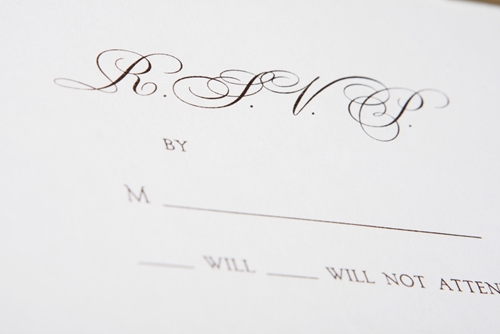I’ve found personalized stationery to be one of the best tools for social or business interactions, but when it comes to personalized stationery, the colors and monogram you choose aren’t the only way to customize it. Whether you’re buying birthday cards, thank you cards or any other type of greeting cards, the method of printing is an important way to display your or your business’s own personal style. Here are some of the most common printing methods used for stationery:
Engraving
The engraving method has been around for centuries, and it’s a classic for a reason. Engraved designs are made when ink is applied to etched indents on copper plates called “dies.” Paper is then placed over the dies and thousands of pounds of pressure push the paper into the etched design, which transfers the ink and raises the paper, thus engraving it. Though it’s typically the most expensive option, engraving gives a very formal look and feel that’s easily recognizable.
Thermography
Thermography creates a textured end product that’s meant to replicate engraving. During the thermography process, wet ink is used to create the designs, then powder is applied to the paper. The printer adheres the powder to the ink with resin, then heats the stationery and cools it to allow the powder and resin to set, creating a raised design.
Embossing
Embossing is another process that creates a raised three-dimensional design, but it’s often referred to as “blind embossing” because no ink is used to create the finished product. Like engraving, paper is pressed between two metal plates, one an exact negative of the other so that the paper is pushed into indentations. Embossing is a fairly simple process that provides lovely results. In fact, you can buy a custom embosser for you or your business to add embossed designs to any piece of paper or card.
Digital printing
One of the least expensive and most common printing options is digital printing. Digital printing is similar to what you would do in your office or home. It uses four colors of ink to create intricate designs and lettering, applied in small dots (similar to pixels in a photograph).
Flat printing
Also called offset printing, flat printing is similar to digital, because it creates a flat but detailed end result. The process is somewhat involved, but in simple terms, it’s done by essentially stamping the image onto the paper using ink on a metal, paper or rubber plate. Flat printing is considered very versatile because it can be used with several different types of paper, thin or thick.
Foil Stamping
Foil stamping uses foil rather than ink to create colored designs on stationery. Foil is transferred onto the paper or cardstock using a die that presses the foil into the design with the help of heat and pressure.
Letterpress
The letterpress printing method is one of the oldest, and has been used since the 1400s for printing pamphlets, books and more. The process involves using molds of letters and designs along with ink to press the designs into thick paper, leaving the paper indented. Like engraving, letterpress is one of the most expensive printing methods, but it provides a beautiful and classic end product.
Handwriting and calligraphy
Handwriting and calligraphy are two very personal printing methods that involve writing each letter out by hand. A lot of stationery etiquette (like for thank you notes or sympathy cards) requires writing at least the inside message and signature yourself. On the other hand, calligraphy is usually written by a professional, and is typically very expensive since they often charge hourly rates.

